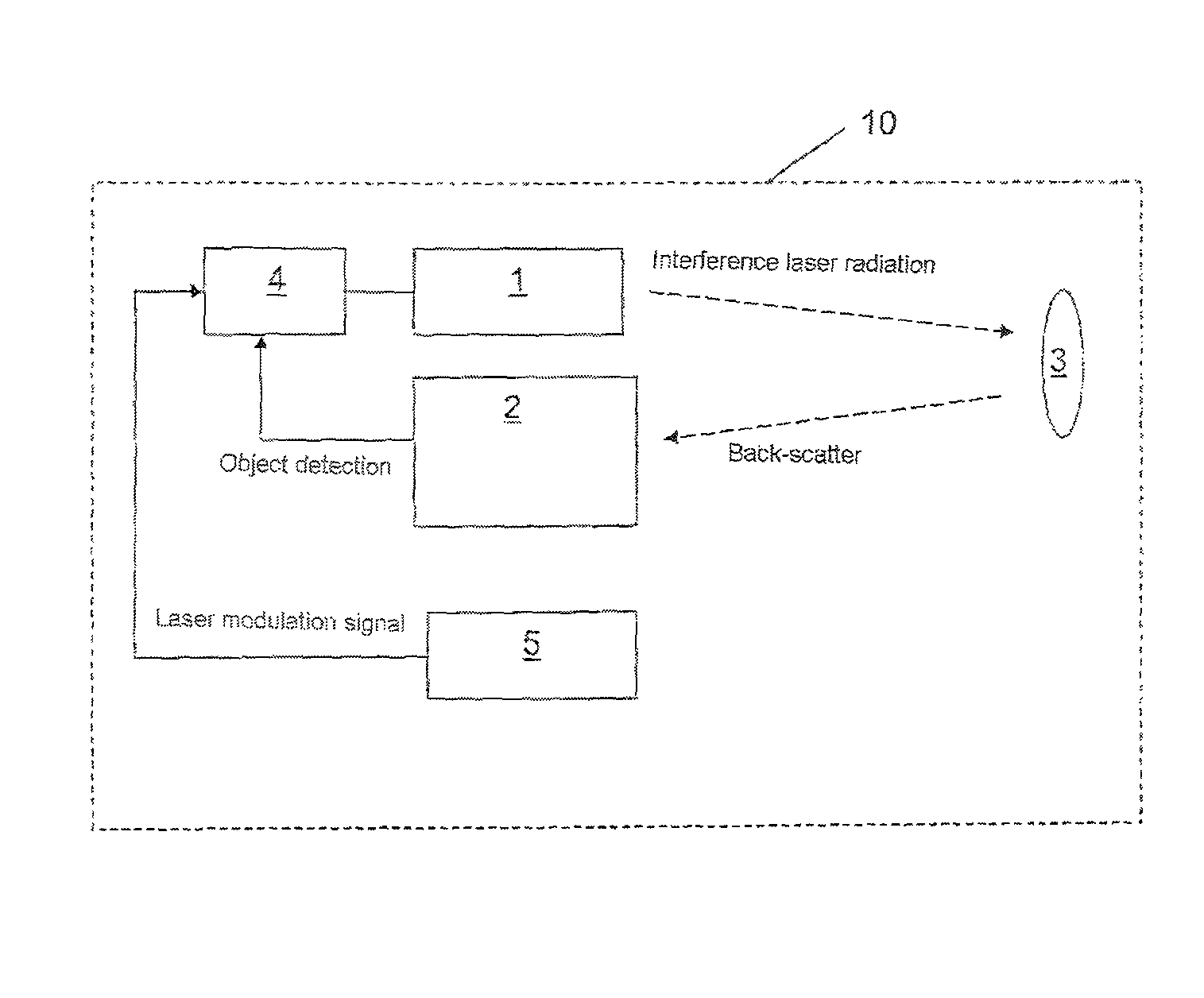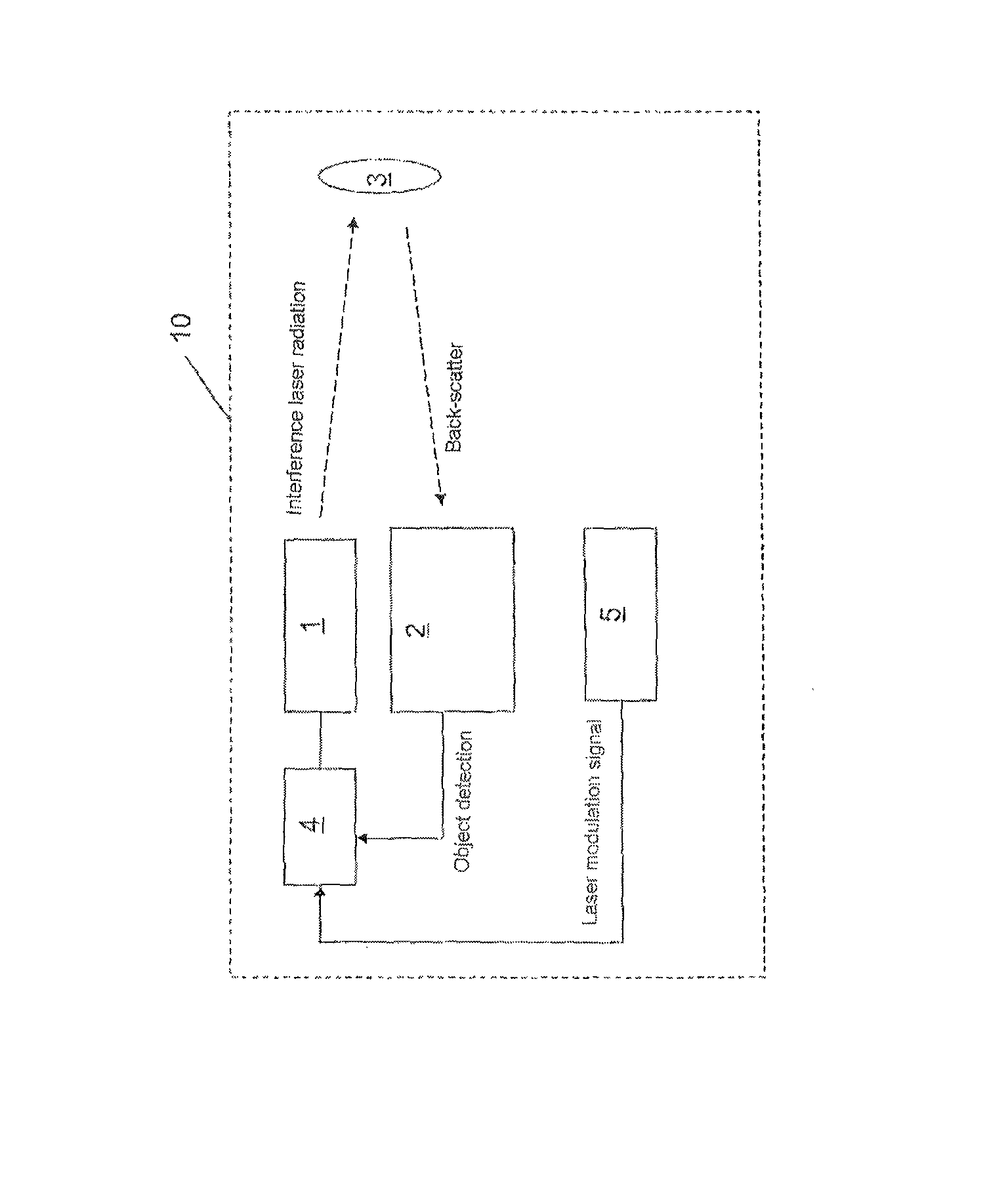Method for operating a pulsed interference laser in an eye-safe manner in a DIRCM system
a pulsed interference laser and dircm technology, applied in the field of eye-safe operation of pulsed interference lasers in dircm systems, can solve the problems of laser safety problems, excessively low interference intensities, and threats to civil aircraft, and achieve the effect of shortening the useable minimum combat distance and improving the misinitiation ra
- Summary
- Abstract
- Description
- Claims
- Application Information
AI Technical Summary
Benefits of technology
Problems solved by technology
Method used
Image
Examples
Embodiment Construction
[0028]The system comprises the pulsed interference laser 1 for combating an approaching guided missile. A reception device 2 receives the back-scatter from the emitted laser radiation and evaluates it. This involves measuring the distance of the object 3 causing the back-scatter. The disabling apparatus 4 coupled to the interference laser 1 enables the emission of the laser energy only for a respective period of time Δt. The emission is enabled for the subsequent period of time only if the reception device 2 does not detect an object within the original laser safety distance during the current period of time Δt. Otherwise, the emission of the laser radiation is suppressed at the end of the current period of time Δt.
[0029]The disabling apparatus 4 operates on the basis of the embodiment shown in the FIGURE, by acting on the modulation device for the laser beam (DIRCM control computer 5). Alternatively, the disabling apparatus can also be implemented as mechanical beam blocking.
PUM
 Login to View More
Login to View More Abstract
Description
Claims
Application Information
 Login to View More
Login to View More - R&D
- Intellectual Property
- Life Sciences
- Materials
- Tech Scout
- Unparalleled Data Quality
- Higher Quality Content
- 60% Fewer Hallucinations
Browse by: Latest US Patents, China's latest patents, Technical Efficacy Thesaurus, Application Domain, Technology Topic, Popular Technical Reports.
© 2025 PatSnap. All rights reserved.Legal|Privacy policy|Modern Slavery Act Transparency Statement|Sitemap|About US| Contact US: help@patsnap.com


